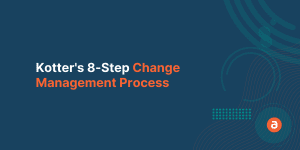One of the most common questions we get at trade shows is what is a product adoption platform or digital adoption tool?
This blog tackles that question by:
- Defining what a product adoption platform is,
- Explaining how it’s different from your LMS or other training solutions, and
- Exploring who could benefit from using an adoption tool.
What is a Product Adoption Platform?
Product adoption or digital adoption platforms, like Apty, are a part of a growing category of SaaS providers focused on helping users navigate and adopt web-based applications.
While individual features may vary, common elements include:
- On-screen guidance,
- Integrated support or help content, and
- Step-by-step guidance.
Apty uses data-centric approach to improve the Product Adoption. Learn more about how Apty increases Product Adoption in this video.
{% video_player “embed_player” overrideable=False, type=’scriptV4′, hide_playlist=True, viral_sharing=False, embed_button=False, autoplay=False, hidden_controls=False, loop=False, muted=False, full_width=False, width=’1920′, height=’1080′, player_id=’30008968693′, style=’margin: 20px auto;’ %}
What are the Product Adoption metrics?
The 4 Product Adoption metrics are:
- Adoption rate
- Time-to-first (key action)
- Percentage of users for the first time (who performed the core action)
- Average Revenue Per User (ARPU)
1. Adoption rate:
It is the percentage of a number of new users to the total number of users. The adoption rate can be calculated on a daily, weekly, monthly, or yearly basis.
Adoption rate = (number of new users / total number of users) *100
For example:
Assume a total of 1,000 users, out of which 250 are new.
Adoption rate = (250/1,000) *100 = 25%
2. Time-to-first (key action)
It is the mean (average) time it takes a new user to use an existing feature, or an existing user to use a new feature for the first time.
For example:
- Time-to-first click the file option on the homepage is 5 seconds.
- Time-to-first submit an application form when an account is first created is 7 days.
3. Percentage of users for the first time (who performed the core action)
It is the percentage of users who have performed a core action (the action you care about) for the first time in a given time frame.
For example:
- 78% of users have completed the task successfully in the month of July
- 33% of users subscribed your product in the month of August
4. The Average Revenue Per User (ARPU)
It is the average amount of money (per month) you expect to earn from any individual user. It helps you to evaluate whether you have the resources to make your business a success.
The Average Revenue Per User = Monthly Recurring Revenue / total number of users
For example:
If your ARPU is $10, then you need 1000 users to make $10,000 per month. If you want to hit the same target with a smaller number of users, then ARPU must be high.
How is a Product Adoption Platform Different than my Other Training Tools?
While product adoption platforms train users on new applications, they differ greatly from a Learning Management System or other training tools. Product adoption tools offer real-time product training and support users by showing them how to complete their tasks as they’re doing it.
An LMS or other training solution typically explains how to use software in an abstract case. A training document or video may show a generic use case with screenshots of each step.
2 effective ways to improve your Product Adoption rates:
- Increase your Support
- Improve your User Onboarding process
Support
Users face difficulties in figuring out how your product works. Users would rather not spend any extra time in understanding how your product works as they can spend that time on something more important to them.
Offering in-app support, guided walkthroughs, embedded tooltips are a great solution to improve Product Adoption rates.
Improve your User Onboarding Process:
Effective Onboarding practice must help users understand your product without any external help. Users must be empowered to find their “Aha!” moment smoothly and easily.
As discussed above, interactive Software Walkthroughs help your users understand the product. So, leveraging a Product Adoption tool might be a go-to place for improving your User Onboarding process.
A Product Adoption tool shows users where to click and what to do next. Moreover, the Product Adoption tool gives analytical information that allows you to make key decisions.
Tools like Apty, the highest-rated modern Digital Adoption Platform, help users learn and perform their tasks while learning instead of just reading how they should do their work.
Benefits of a Digital Adoption Platform
Digital adoption platforms should decrease training and support costs and increase productivity. In many cases, the on screen guidance offered by a product adoption tool can replace the need for costly and ineffective classroom training sessions.
Digital Adoption Platform like Apty helps to
- Improve Product Adoption
- Create Interactive Software Walkthroughs
- Improve User Experience and User Engagement
- Increase retention rates and minimizes churn
- Maximize user exposure to the full product value
- Increase Employee Productivity
- Increase Return on Investment (ROI)
- Real-time navigation and instruction
One of Apty’s clients, a major U.S. airline, utilizes Apty to help with CA PPM adoption. As a result of Apty’s adoption tools, they experienced:
- 80% reduction in CA PPM support tickets,
- 70% decrease in time spent on CA PPM training, and
- 3x increase in productivity.
What are the Common Uses of Product Adoption Platforms?
The uses of product adoption platforms are not limited to new users. Common use cases for an adoption platform include:
- Change Management – Adopting a new software or updating to a new version? The onscreen guidance helps users master new software and processes.
- Employee Onboarding – Quickly introduce new employees to your enterprise software.
- Customer Success and Engagement – For front-line agents in a customer contact center, every second counts. Guided workflows help agents quickly respond to customers requests.
- Customer Experience – Product adoption platforms aren’t just for employees. On-screen guidance can also help your customers use your website and other web-based applications.













